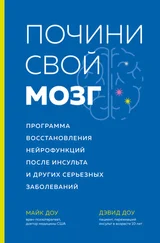Y. Zhou et al. “Altered Default Network Resting-State Functional Connectivity in Adolescents with Internet Gaming Addiction,” PLoS One 8, № 3 (March 26, 2013): e59902.
R. J. Dwyer, K. Kushlev, and E. W. Dunn. “Smartphone Use Undermines Enjoyment of Face-to-Face Social Interactions,” J. Exp. Soc. Psychol. 78 (September 2018): 233–239.
Shalini Misra, Lulu Cheng, Jamie Genevie, and Miao Yuan. “The iPhone Effect: The Quality of In-Person Social Interactions in the Presence of Mobile Devices,” Environment and Behavior 48, № 2 (2016).
J. Schroeder et al. “Handshaking Promotes Cooperative Dealmaking,” Harvard Business School NOM Unit Working Paper 14–117, May 2014, доступно на SSRN (Social Science Research Network): https://ssrn.com/abstract=2443674or http://dx.doi.org/10.2139/ssrn.2443674.
S. T. Asma. “This Friendship Has Been Digitized,” op-ed, New York Times, March 23, 2019. https://www.nytimes.com/2019/03/23/opinion/this-friendship-has-been-digitized.html.
Больше информации о докторе Лизе Строман можно найти на ее сайте DrLisaStrohman.com.
J. D. Elhai et al. “Problematic Smartphone Use: A Conceptual Overview and Systematic Review of Relations with Anxiety and Depression Psychopathology,” J. Affect. Disord. 207 (January 2017): 251–259.
Y. S. Cheng et al. “Internet Addiction and Its Relationship with Suicidal Behaviors: A Meta-Analysis of Multinational Observational Studies,” J. Clin. Psychiatry 79, № 4 (June 2018): 17r11761.
D. L. Clark, J. L. Raphael, and A. L. McGuire. “HEADS: Social Media Screening in Adolescent Primary Care,” Pediatrics 141, № 6 (June 2018).
ABC News Australia. “Internet-Addicted South Korean Children Sent to Digital Detox Boot Camp”. https://youtu.be/YuT_RAugJu0.
Канарейки очень чувствительны к наличию метана или угарного газа в воздухе. Поэтому шахтеры брали в забой клетки с птицами и в случае беспокойства или смерти пернатых поднимались на поверхность. Идиома miner’s canary («шахтерская канарейка») означает любое указание на опасность. Прим. пер.
Аккаунт Мэтта Каттса в Twitter: @MattCutts.
Статистику по тенденциям и использованию социальных сетей см. в: Social: GlobalWeb-Index’s Flagship Report on the Latest Trends in Social Media (2018). https://www.globalwebindex.com/hubfs/Downloads/Social-H2-2018-report.pdf.
Saima Salin. “How Much Time Do You Spend on Social Media? Research Says 142 Minutes per Day,” Digital Information World, January 4, 2019 ( www.digitalinformationworld.com).
Social: GlobalWebIndex’s Flagship Report.
Мобильное приложение обмена сообщениями с прикрепленными фото и видео. Через некоторое время переданные файлы становятся совершенно недоступными. Прим. ред.
Социальный интернет-хостинг. Из-за особенностей контента особо популярен среди женщин. Прим. ред.
Беседа с Чаматом Палихапитией была опубликована Тимом Хайнсом 11 декабря 2017 года под заглавием: “Former Facebook Exec: Social Media Is Ripping Our Social Fabric Apart”. https://www.realclearpolitics.com/video/2017/12/11/fmr_facebook_exec_social_media_is_ripping_our_social_fabric_apart.html.
J. R. Corrigan et al. “How Much Is Social Media Worth? Estimating the Value of Facebook by Paying Users to Stop Using It,” PLoS One 13, № 12 (December 2018): e0207101.
Happiness Research Institute. “The Facebook Experiment,” 2015. www.happinessresearchinstitute.com/publications.
M. G. Hunt et al. “No More FOMO: Limiting Social Media Decreases Loneliness and Depression,” J. Soc. Clin. Psychol. 37, № 10 (November 2018): 751–768.
B. A. Primack et al. “Social Media Use and Perceived Social Isolation Among Young Adults in the U.S.,” Am. J. Prev. Med. 53, № 1 (July 2017): 1–8.
P. Verduyn et al., “Passive Facebook Usage Undermines Affective Well-Being: Experimental and Longitudinal Evidence,” J. Exp. Psychol. Gen. 144, № 2 (April 2015): 480–488.
Q. He, O. Turel, and A. Bechara. “Association of Excessive Social Media Use with Abnormal White Matter Integrity of the Corpus Callosum,” Psychiatry Res. Neuroimaging 278 (August 2018): 42–47.
L. E. Sherman et al. “The Power of the Like in Adolescence: Effects of Peer Influence on Neural and Behavioral Responses to Social Media,” Psychol. Sci. 27, № 7 (July 2016): 1027–1035.
Lauren E. Sherman, Leanna M. Hernandez, Patricia M. Greenfield, and Mirella Dapretto. “What the Brain ‘Likes’: Neural Correlates of Providing Feedback on Social Media,” Social Cognitive and Affective Neuroscience 13, № 7 (September 2018): 699–707.
Английский поэт Александр Поуп (1688–1744) перевел «Одиссею» Гомера не гекзаметром, а пятистопным ямбом и зарифмовал. Поэтому вариант Поупа сильно расходится с оригиналом Гомера. Здесь – цитата из перевода на русский поэмы Поупа, сделанного Д. Бороком. Прим. пер.
«Молитвы по возникающим поводам». Прим. пер.
J. Decety and P. L. Jackson. “The Functional Architecture of Human Empathy,” Behav. Cogn. Neurosci. Rev. 3, № 2 (June 2004): 71–100.
William Ickes. Everyday Mind Reading: Understanding What Other People Think and Feel (Amherst, NY: Prometheus Books, 2003).
S. H. Konrath, E. H. O’Brien, and C. Hsing. “Changes in Dispositional Empathy in American College Students Over Time: A Meta-Analysis,” Pers. Soc. Psychol. Rev. 15, № 2 (May 2011): 180–198.
Научную дискуссию об эмпатии смотрите в работах: H. Riess. “The Science of Empathy,” J. Patient Exp. 4, № 2 (June 2017): 74–77, и K. Jankowiak-Siuda and W. Zajkowski. “A Neural Model of Mechanisms of Empathy Deficits in Narcissism,” Med. Sci. Monit. 19 (2013): 934–941.
D. E. Reidy et al. “Effects of Narcissistic Entitlement and Exploitativeness on Human Physical Aggression,” Pers. Individ. Dif. 44, № 4 (March 2008): 865–875.
Читать дальше
Конец ознакомительного отрывка
Купить книгу




![Дэвид Доу - Почини свой мозг. Программа восстановления нейрофункций после инсульта и других серьезных заболеваний [litres]](/books/431118/devid-dou-pochini-svoj-mozg-programma-vosstanovlen-thumb.webp)







